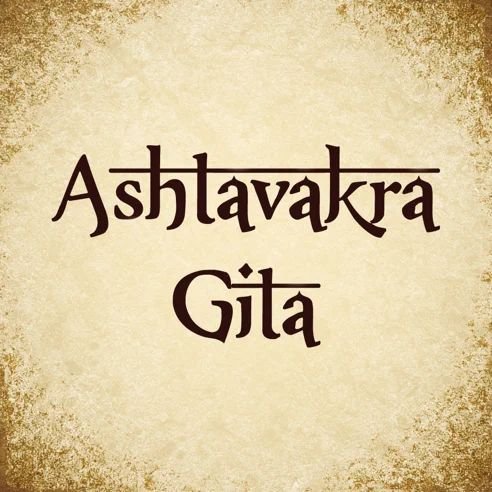Ashtavakra Gita
Ashtavakra Gita

The Ashtavakra Gita is a profound scripture that presents the essence of non-dualism (Advaita Vedanta). It is a dialogue between Sage Ashtavakra and King Janaka, focusing on the realization of the Self as pure consciousness, untouched by the body, mind, or worldly experiences. The text teaches that liberation is already inherent in every being and can be realized instantly through awareness.
Sage Ashtavakra explains that the mind is the source of bondage. People create suffering by identifying with thoughts, emotions, desires, and the physical body. The seeker must observe the mind without attachment and recognize its impermanent and illusory nature. By doing so, one transcends the cycles of pain, fear, and delusion.
Detachment, or non-attachment, is a recurring theme. The Gita emphasizes that pleasure, pain, success, failure, life, and death are all transient. By remaining equanimous and detached from external circumstances, the seeker attains inner peace. Liberation is not a reward of effort, but a recognition of one’s true nature.
The text teaches that the world, including the body and external phenomena, is temporary and arises within consciousness. By realizing that the Self is beyond all dualities, the seeker no longer identifies with the ego, social roles, or material possessions. This understanding removes fear, sorrow, and the sense of limitation.
Stories, analogies, and direct instructions throughout the dialogue illustrate how attachment and ignorance obscure the Self. Ashtavakra stresses that true knowledge is immediate; one does not attain it gradually through rituals or practices, but by direct insight into the nature of consciousness.
Non-duality is the core teaching: there is no real separation between the individual and the ultimate reality. All experiences, joys, and sorrows arise and dissolve within consciousness. By perceiving the Self as ever-present, the seeker transcends the illusion of separation and attains freedom.
The Gita emphasizes living in awareness rather than renouncing the world externally. Even while performing duties, one can remain unattached internally. This inner freedom allows the seeker to experience life fully without being bound by it.
Finally, the Ashtavakra Gita affirms that liberation is natural and inherent. By abandoning identification with the body, mind, and ego, and abiding in pure awareness, the seeker experiences eternal bliss, unshakable peace, and the realization of the Self as infinite, complete, and ever-free.





















































